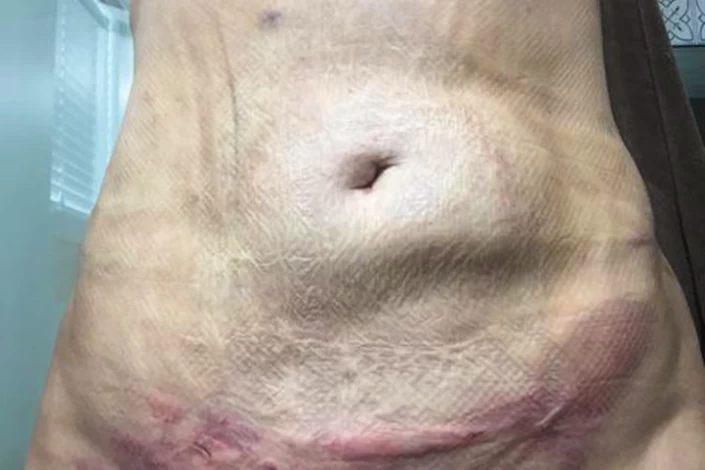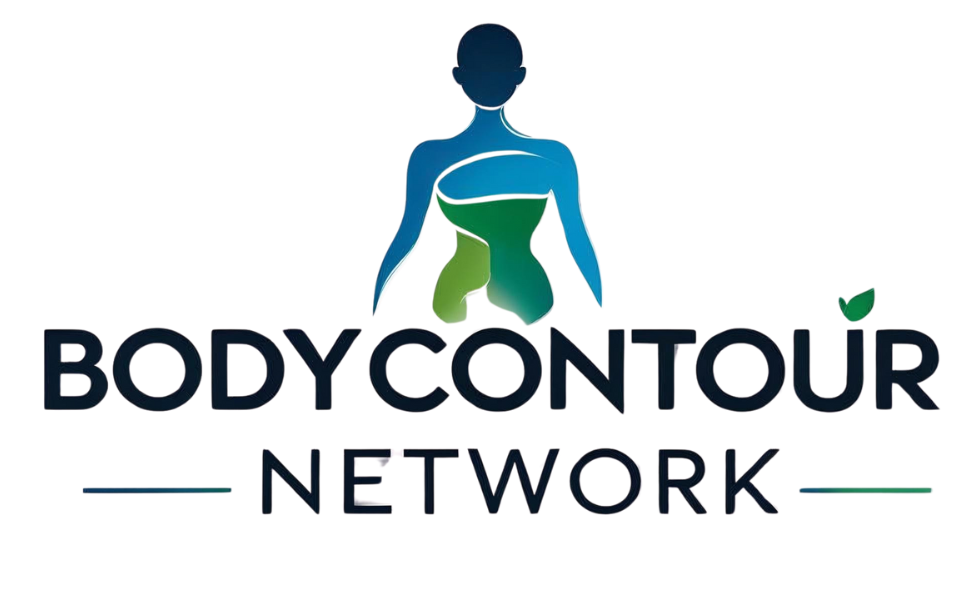Liposuction Risks and Side Effects: A Comprehensive Guide to What You Must Know
Considering liposuction is a significant step toward achieving your desired body contours. However, a deep understanding of the potential liposuction risks and side effects is a crucial part of the process. While modern liposuction is generally considered a safe procedure with a high satisfaction rate, it is, nevertheless, a surgical intervention with inherent risks. For this reason, this guide is designed to provide a transparent, comprehensive overview of what to expect, from common temporary issues to rare but serious complications. By being fully informed, you can partner with your surgeon to minimize these risks and, as a result, set realistic expectations for a safe and successful outcome.
- A clear distinction between common side effects and serious medical complications.
- Detailed explanations of temporary issues like bruising, swelling, and numbness.
- An in-depth look at serious potential risks, including infection and blood clots.
- Actionable strategies and best practices on how to minimize liposuction risks.
- Clear guidelines on when to seek immediate medical attention.
Overview of Liposuction Safety: Side Effects vs. Risks
First, it’s essential to distinguish between expected side effects and potential complications (risks). Side effects are the body’s normal, temporary reactions to the surgical trauma, and they are an expected part of the healing process. In contrast, risks or complications are undesirable events that are not a normal part of recovery and may require additional medical intervention. According to data from the American Society of Plastic Surgeons (ASPS), the rate of major complications from liposuction is very low, often cited as less than 1%, especially when performed by a board-certified plastic surgeon in an accredited facility.
Furthermore, the overall profile of liposuction risks can be influenced by several factors. The specific technique used matters; for instance, modern technologies like VASER (ultrasound-assisted) or laser-assisted liposuction may result in less bleeding and bruising compared to traditional tumescent liposuction due to their method of fat emulsification. Moreover, patient-specific factors like pre-existing health conditions (e.g., diabetes, autoimmune disorders), smoking status, and the extent of the procedure (volume of fat removed and number of areas treated) all play a significant role in your personal risk profile.
Our detailed liposuction recovery timeline provides more information on the healing process.
Common and Expected Side Effects After Liposuction
These are the issues that nearly every patient will experience to some degree. While temporarily bothersome, they are, in fact, signs that your body is healing correctly.

Bruising and Swelling (Edema)
This is the most common side effect. Trauma to small blood vessels during the procedure causes bruising, which is often extensive and can last for 2-3 weeks, changing color from purple/black to green and yellow as it heals. Subsequently, swelling peaks around the third day post-op and then begins a long, gradual process of resolution. While most significant swelling subsides in 4-6 weeks, residual swelling can persist for 6 months or more before your final contour is revealed.
Pain and Discomfort
You should expect moderate pain and soreness for the first few days, which is typically managed effectively with prescribed pain medication. This usually transitions to a feeling of deep achiness or tenderness, especially with movement, which can, in turn, be managed with over-the-counter options like acetaminophen.
Numbness and Sensation Changes
It is very common to experience temporary numbness or altered sensations (like tingling or «zapping») in the treated areas. This occurs due to irritation or stretching of small sensory nerves. Fortunately, sensation almost always returns gradually over several weeks to months as these nerves recover.
Scarring
Liposuction requires small incisions (typically less than a centimeter) to insert the cannula, which will consequently result in small scars. A skilled surgeon will place them in discreet locations. Initially red or pink, they fade over a year to become fine, pale lines.
Fluid Drainage
For the first 24-48 hours, you may experience blood-tinged anesthetic fluid draining from your incisions. This is normal and, indeed, beneficial, as it helps to reduce post-operative swelling and bruising.
Serious Risks and Potential Complications
These complications are rare but are critical to understand. Awareness and proper preventative care are key to avoiding them. The most serious liposuction risks require immediate medical attention.
Infection
Any procedure that breaks the skin carries a risk of infection. Signs include a fever higher than 101°F (38.5°C), increasing redness or warmth around an incision, pus-like drainage, or severe, worsening pain. While rare, it is a serious risk that requires prompt treatment with antibiotics.
Blood Clots (DVT and Pulmonary Embolism)
A Deep Vein Thrombosis (DVT) is a clot that forms in a deep leg vein. The risk is higher in longer procedures or for patients with limited mobility post-op. If a piece of this clot breaks off and travels to the lungs, it causes a pulmonary embolism (PE), which is a life-threatening emergency. Therefore, prevention through early walking and compression garments is vital. Symptoms of a DVT include severe pain and swelling in one leg, while symptoms of a PE include sudden shortness of breath, sharp chest pain, and coughing.
Fat Embolism Syndrome (FES)
An extremely rare but potentially fatal complication where loosened fat globules enter the bloodstream and travel to the lungs or brain. This is a medical emergency characterized by confusion, respiratory distress, and a petechial rash.
Contour Irregularities and Aesthetic Issues
This is one of the more common aesthetic complications. Issues can include waviness, dimpling, lumpiness (fibrosis), or asymmetry. This can result from uneven fat removal or poor skin elasticity. Sometimes these issues can be improved with massage, but in other cases, a revision procedure may be needed.
Visceral Perforation
An extremely rare but severe risk where the surgical cannula accidentally punctures an internal organ. This requires immediate emergency surgery for repair. The risk is highest during abdominal liposuction and is minimized by choosing a highly experienced surgeon.
Skin Necrosis
This involves the death of skin tissue over the treated area, which can occur if the blood supply is compromised. Smokers are at a significantly higher risk for this complication due to nicotine’s effect on blood vessels.
Anesthesia Complications
As with any major surgery, there are risks associated with anesthesia, which can range from nausea to more severe cardiopulmonary events. For this reason, an accredited facility and a board-certified anesthesiologist are critical for minimizing these risks.
For those concerned about risks, our guide to VASER liposuction explores options that may involve less trauma.
How to Minimize Liposuction Risks and Side Effects
Patient participation is a cornerstone of safety. You can actively reduce your chances of experiencing complications by following these essential steps.
- Choose a Board-Certified Plastic Surgeon: This is the single most important decision you will make. A board-certified surgeon has undergone rigorous, specialized training, passed comprehensive exams, and operates in accredited facilities, ensuring the highest standards of safety and care.
- Be Honest and Thorough in Your Consultation: Additionally, you must disclose your complete medical history, including all medications, supplements, and lifestyle habits like smoking and alcohol use. This allows your surgeon to accurately assess your individual liposuction risks.
- Follow All Pre-Operative Instructions: This will likely include stopping smoking at least 4-6 weeks before surgery, avoiding blood-thinning medications and supplements (like Aspirin, Ibuprofen, and Vitamin E), and arranging for a responsible adult to care for you post-op.
- Adhere Strictly to Post-Operative Care: Finally, wear your compression garment exactly as directed. Stay hydrated, eat a nutritious diet, and perform light walking as soon as you are cleared to do so to prevent blood clots. Attend all of your follow-up appointments.
Effective pain management is also key to a comfortable and mobile recovery.
When to Seek Immediate Medical Help
While your surgical team will provide detailed instructions, you must know the warning signs that require urgent action. Contact your surgeon immediately or go to the nearest emergency room if you experience any of the following:
- Sudden, severe shortness of breath or chest pain. (Could signal a pulmonary embolism)
- A fever above 101°F (38.5°C). (Could signal an infection)
- Pain or swelling in one leg that is significantly worse than the other. (Could signal a DVT)
- Greenish or yellowish pus-like, foul-smelling drainage from an incision.
- Pain that is severe and not controlled by your prescribed medication.
- Spreading redness or dark discoloration of the skin around treated areas.
Conclusion: A Partnership in Safety
The journey through liposuction involves a partnership between a skilled surgeon and an informed, compliant patient. While the list of liposuction risks and side effects must be taken seriously, the vast majority of procedures are performed without significant complications. Ultimately, by selecting a qualified expert, preparing your body for surgery, and diligently following post-operative care protocols, you can effectively manage and minimize these risks, paving the way for a safe experience and results you can enjoy for years to come.
FAQs
Q: What is the most common side effect of liposuction?
A: By far, the most common side effects are swelling and bruising. These are a normal part of the healing process and resolve over several weeks to months.
Q: How common are the serious risks?
A: Serious risks like infection, DVT, or fat embolism are very rare, with major complication rates well below 1% when the procedure is performed by a board-certified plastic surgeon in an accredited surgical facility.
Q: How can I best minimize my risks?
A: Your best strategy is a three-pronged approach: choose a highly qualified, board-certified surgeon; follow all pre-operative instructions diligently (especially regarding smoking and medications); and commit fully to your post-operative care plan.
Q: Is liposuction safe overall?
A: Yes, for the right candidate in the hands of the right surgeon, liposuction has a proven track record of safety and is one of the most commonly performed cosmetic procedures worldwide.
Medical Disclaimer: This information is intended for educational purposes only and should not be considered a substitute for professional medical advice, diagnosis, or treatment. Always consult with a qualified, board-certified plastic surgeon to discuss your individual health situation and determine if liposuction is right for you.
